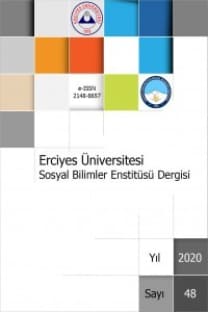Yükselen Ekonomilerde Döviz Kuru Rejimi Seçimi: Ampirik Bir Analiz
Döviz kuru rejimleri, gerek ülkelerarası ekonomik ilişkilerin temel belirleyicisi olması, gerekse ulusal piyasaları doğrudan etkilemesi nedeni ile uluslararası iktisat literatüründe sıklıkla tartışılan bir konudur. Bu çalışmada, 17 yükselen ülke ekonomisinin 1996–2006 yılı verileri kullanılarak ülkelerin döviz kuru rejim tercihini etkileyen faktörler, İkili Tercih Panel Probit yöntemi kullanılarak tahmin edilmiştir. Tahmin sonuçlarına göre, teorik beklentinin aksine dışa açıklık arttıkça, sabit döviz kuru tercihi azalmaktadır. Ancak bu değişken istatistiksel olarak anlamsızdır. Diğer yandan ülkeye giren sermaye miktarındaki artış, sabit döviz kuru tercihini artırmakla birlikte bu değişkenin katsayısı da istatistiksel olarak anlamsızdır. Büyüme oranındaki artış, teorik olarak beklentilerle uyumlu olarak sabit döviz kuru aleyhine bir tercihe neden olmaktadır. Ülkeler arasındaki enflasyon farkı arttıkça, sabit döviz kuru tercihi ihtimali de artmaktadır. Son olarak reel döviz kurundaki artış, sabit döviz kuru tercihini ters yönde etkilemektedir
Anahtar Kelimeler:
Döviz Kuru Rejimleri, İki Kutup Hipotezi, İmkansız Üçleme Hipotezi, Dalgalanma Korkusu, Probit Model
THE CHOICE OF EXCHANGE RATE REGIME IN EMERGING MARKET ECONOMIES: AN EMPIRICAL ANALYSIS
The choice of the exchange rate regime has become one of the most important issues in international economics. Because it is the main determinant of international economic relations and it has considerable effects on national markets. In this paper, factors that affect the choice of the exchange rate regime are analyzed for 17 emerging market economies over the period 1996–2006. Binary Panel Probit Model is used to analyze the effects of these variables on the choice of exchange rate regime. According to the results, as openness increases, the choice of fixed exchange rate regime decreases in contrast to the theoretical expectations. However, this variable is statistically insignificant. As the amount of capital entering the country goes up, the preference of fixed exchange rate regime increases as well. The coefficient of this variable is also statistically insignificant. On the other hand, an increase in growth rate lead to the choice of flexible exchange rate regimes. In addition, an increase inflation rate difference between countries increases the possibility of choice of fixed exchange rate. But an increase real in exchange rate decreases the possibility of choice of fixed exchange rate
Keywords:
Exchange Rate Regime, Bipolarity Hypothesis, Impossible Trinity, Fear of Floating, Probit Model.,
- Yayın Aralığı: Yılda 2 Sayı
- Yayıncı: Erciyes Üniversitesi
Sayıdaki Diğer Makaleler
I. Büyük Millet Meclisi’nde Kayseri Mebusları ve Milli Mücadeledeki Etkinlikleri
Sosyal Bilgiler Eğitiminde Yansıtıcı İnceleme Yaklaşımına İlişkin Öğretmen Görüşleri
Türk Halk Müziği Çalgı Topluluklarının Yapılanması ve Bağlama
Geçmişten Günümüze Türk Müziğinde Toplu İcra Anlayışı Üzerine Bir İnceleme
Hacı Torun Efendi’nin Miftâhu’l Hayât İsimli Eseri Üzerine Bir Araştırma
TÜRKİYE’DE ÇEVRE YÖNETİMİ KONUSUNDA ŞİRKETLERİN GERÇEKLEŞTİRDİĞİ PR ÇALIŞMALARI ÜZERİNE ANALİZ
İktisadın Yeni Coğrafi Açılımı: Yeni Ekonomik Coğrafya Yaklaşımı
